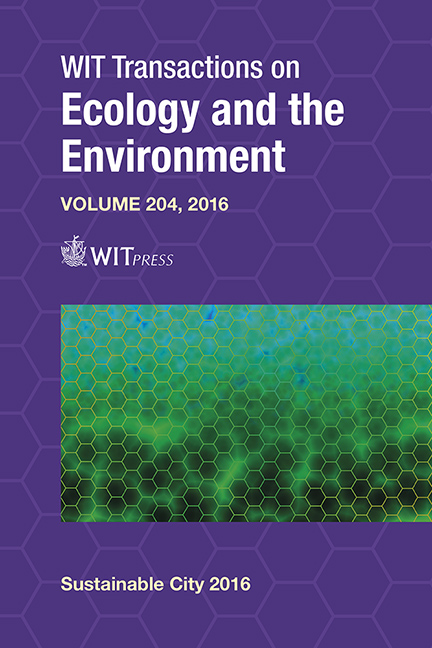Forecast About Energy Behavior And The Indoor Quality Of A Tower Of Social Dwellings In Bucaramanga (Colombia)
Price
Free (open access)
Transaction
Volume
204
Pages
12
Page Range
547 - 558
Published
2016
Size
393 kb
Paper DOI
10.2495/SC160461
Copyright
WIT Press
Author(s)
G. Osma, R. Mantilla, M. Millán, G. Ordóñez
Abstract
This paper presents the forecast about the energy behavior and indoor quality of a tower with thirty apartments in Bucaramanga (Colombia) using building simulation tools. The modeling of the tower is done in three tools in order to reduce the error of estimations. This dwelling project is part of a Colombian government program for reducing the lack of dwellings in the social-economics stratum of low-income families. These dwellings are built in urban zones, they have total areas of between 40m2 and 60m2 on one or two levels and their cost is lower than USD 40,000. The energy sustainability of building depends mainly on passive solutions (daylighting and natural ventilation), although this consideration is very discrete in the architectural design of these social projects. Due to lack of land, many future projects will be built in towers of five levels. In order to estimate the life quality of users in these new kinds of dwellings, the Universidad Industrial de Santander has started an evaluation process of these towers according to the specific climate conditions of Bucaramanga. The building simulation tools used in this study are DesignBuilder, eQUEST and Ecotect for carrying out analyses like potential daylighting, thermal comfort and annual energy consumption. Results indicate that near to 70% of time (more of 6,000 hours per year) there are no conditions of thermal comfort and the inside temperature is at least 2°C above ambient temperature, mainly during tropical sun-time (6 a.m. to 6 p.m.), which is significant, considering the warm and humid climate of the city. Annual energy consumption estimated by DesignBuilder, eQUEST and ECOTECT is very similar: 31.10, 28.69 and 31.95 kWh/m2/year, respectively. The illumination causes near to 20% of the total consumption.
Keywords
E Energy simulation, social dwellings, tropical zone, thermal comfort, DesignBuilder, eQUEST, Ecotect analysis





